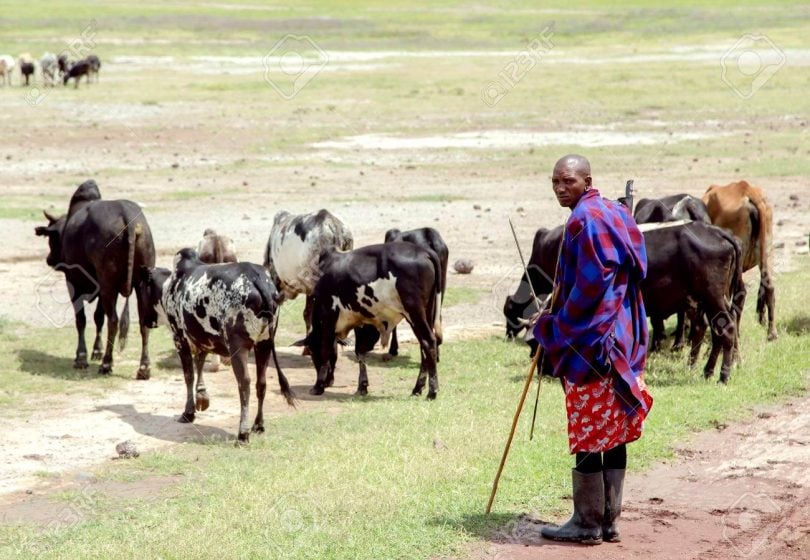Famous German conservationist Professor Bernhard Grzimek and his son Michael camped in the present Ngorongoro Conservation Area in northern Tanzania to document then advise and propose to the government of the then Tanganyika on new boundaries of the Serengeti National Park and Ngorongoro.
It was in 1959 when Prof. Grzimek and Michael proposed the formation of these 2 African wildlife parks, now counted as tourist icons in East Africa.
Through Grzimek’s film and a book, all titled “Serengeti Shall Not Die,” these2 wildlife parks in Northern Tanzania are now celebrating 60 years of wildlife conservation, pulling hundreds of thousands of tourists from all corners of the world to visit this part of Africa for wildlife safaris.
Standing as tourist magnets, Tanzanian wildlife parks under the management and trusteeship of the Tanzania National Parks (TANAPA) stand as the leading tourist attraction hotspots in Tanzania and East Africa.
Six decades since its formation, the Ngorongoro Conservation Area Authority has been striving to live up to its assignment, prompting UNESCO to declare the area a Man and Biosphere reserve and mixed natural and cultural world.
The Ngorongoro Conservation Area (NCA) situated in Tanzania’s northern tourism circuit is used this year’s World Tourism day to reflect on its mandate, achievements, and the way forward after 60 years of its existence.
NCAA was in 1959 split from the Great Serengeti ecosystem for pastoralist and hunter-gathering communities to co-exist with wildlife.
Maasai and Datoga pastoralists as well as Hadzabe hunter-gatherer communities were evicted from Serengeti National Park and Maswa Game Reserve to settle in the multiple land use encompassing the Olduvai Gorge in a huge expanse of savannah forest and bush land.
The area became the UNESCO World Heritage site in 1979, a Biosphere Reserve in 1981, and mixed Natural and Cultural World Heritage site 9 years ago.
Early hominid foot prints dating back to 3.6 million years are among paleontological, archaeological, and anthropological sites whose scientific evidence confirms that the area is the cradle of mankind.
Ngorongoro Conservation Area Authority is tasked to conserve and protect all the Natural and Cultural resources the area is endowed with.
The management of the Conservation Area also takes a leading role to promote tourism and protection interests of pastoralists and the hunter-gatherer communities living in the area.
Sixty years since its formation, Ngorongoro has been striving to live up its assignments, prompting UNESCO to declare the area a Man and Biosphere Reserve.
The Authority has directly created several decent jobs inside and outside the area, including to conservators, tour guides, tour operators, curio sellers, and hoteliers serving a magnitude of tourists going there every day.
Covering some 8,300-kilometers in area, it still forms parts of the annual migration of wildebeest, zebra, gazelles, and other animals to the northern plains of Serengeti National Park in Tanzania and Maasai Mara Game Reserve in Kenya to date.
Rocks, landscape, and archaeological and paleontological resources of a sole spot in the world with a high concentration of wildlife living with humans have attracted 702,000 tourists, about 60 percent of about 1.5 million tourists, who visited Tanzania last year.
The number of tourist lodges has doubled from 3 in the 1970s to 6 to date along with permanent tented camps catering 820 beds.
Other accommodation facilities inside the Ngorongoro Conservation Area are 6 semi-permanent campsites and 46 public and special camps.
Products have increased from the traditional photographic tourism to cycling, hot air balloon rides at Ndutu and Olduvai Gorge, horse riding, bird watching, walking safaris, and game driving.
Among prominent personalities who visited Ngorongoro Conservation Area are the 42nd US President Bill Clinton, the Queen of Denmark Magrethe II, Reverend Jesse Jackson, and Hollywood film stars Chris Tucker and John Wayne.
Others were Prince William and his entire delegation which attended the 2008 Leon Sullivan summit in Arusha. Some scenes in the Oscar-winning Out of Africa and John Wayne’ Hatari were filmed within the area.
Besides its traditional tourist sites, the Ngorongoro Conservation Area offers visitors with cultural or eco-tourism products in Maasai homesteads or bomas scattered within the area.
The management has recently put up a state-of-the-art 15-story building dubbed Ngorongoro Tourism Centre (NTC) in Arusha Central Business District to cushion its activities in case the delicate tourism business shakes.
The management has in the past 60 years heavily invested in development of pastoralist communities, including provision of primary to university education in and outside the country.
It has also been providing local authorities with funds for constructing roads and health facilities, supplying water, and providing veterinary services within the area.
Additional tourist sites have been established within the Ngorongoro Conservation Area, aiming to attract more tourists. These new sites include the Olduvai Gorge within the area, Muumba Rock near Lake Eyasi in Karatu District, and Engaruka Ruins in Monduli District.
The Olduvai Gorge though is situated within the area; the Directorate of Antiquities used to manage it.
Ngorongoro Conservation Area Authority Chief Conservator Dr. Freddy Manongi says the pressure exerted by the pastoralist and hunter-gatherer communities on natural resources is weighing down the area.
A recent human population census shows their population to have increased 11 times from 8,000 to 93,136 people since the area was established 6 decades ago.
The way of life has significantly changed in the conservation area particularly among members of the traditionally livestock grazing communities.
Permanent and modern houses are mushrooming among the elite classes of the Maasai and Datoga ethnic groups to the expense of the aesthetic quality of the area.
The author, Apolinari Tairo, is a member of the Board for the African Tourism Board and serves on its Steering Committee.























